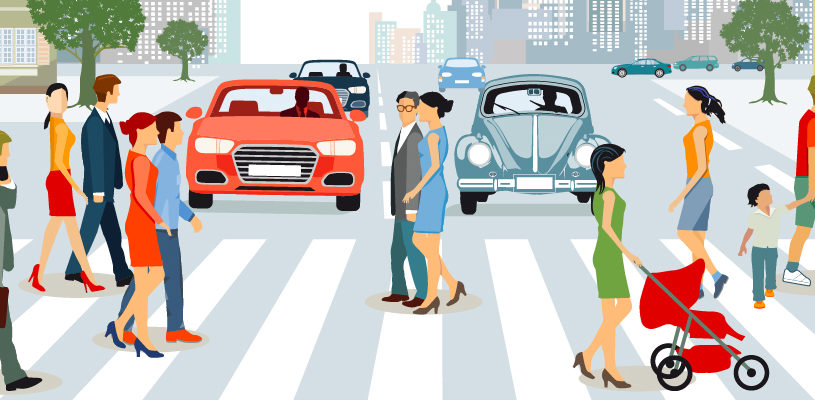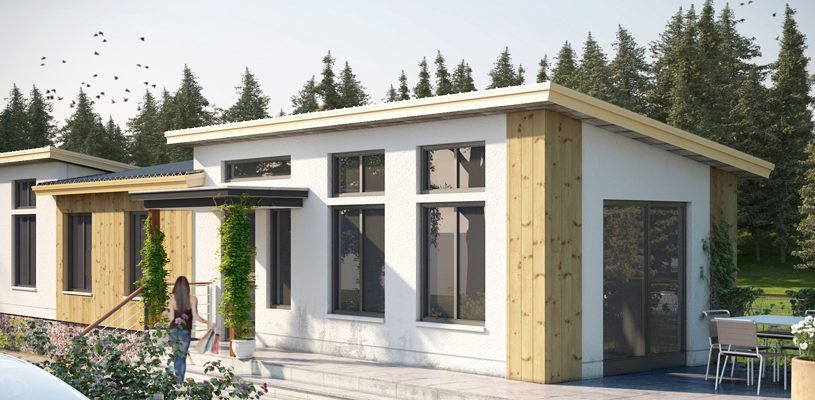Building a walkable community

Walking is the first thing that a child wants to do and the last thing that an older person wants to give up. It is the most natural form of transportation and enables us to be independently mobile.
Creating walk-friendly communities and encouraging people to walk more often can lead to improved health outcomes, revitalize local economies, foster social connections, and contribute to safer and more sustainable cities and towns. One of the best things about walking is that you don’t need any fancy or high-priced equipment to do it. You just put on a comfortable pair of shoes, open your door, and enjoy the trip.
Assess Your Community’s Walkability
So, what does a walk-friendly community look like? Assessing how walk-friendly a community is involves a comprehensive review of plans and policies; engineering and community design; education and encouragement activities; enforcement initiatives; and the evaluation of progress over time.
Planning
Planning for walking happens at many different levels, ranging from pedestrian plans, community improvement plans, and official plans, to regional and provincial plans and policies. A comprehensive plan for walking addresses all “five Es” as outlined below. Engaging citizens in identifying issues and creating a vision for a walk-friendly community is vital to the planning process. With thorough and ongoing planning, as well as a supportive policy environment, a community can become proactive rather than reactive in addressing issues such as accessibility, safety, connectivity, and attractiveness.
Engineering
Engineering involves designing, operating, and maintaining quality walking facilities and is a critical element in producing a walk-friendly community. Designers and engineers play a critical role in creating safer, inviting, and more accessible streetscape for walking, and these benefits aren’t limited to walkers. By accommodating walkers in all designs for the public right-of-way, they become safer for all users. It is essential that pedestrian engineering and design tools are used throughout communities, including sidewalk accommodations and standards, crossings and intersections, traffic calming, and new and innovative treatments.
Education
Education programs and activities are primary components in creating a successful walk-friendly community because they inform, inspire, motivate, and reward walkers and other users of the public right-of-way. Effective pedestrian safety education begins at an early age, is age-specific, and continues through the years across all modes. For example, motorists that are educated about pedestrian safety contribute to a safer, more pleasant walking environment for people.
Encouragement
Encouragement programs such as Active and Safe Routes to School and walking clubs can be fun and inclusive. Events that “open streets” to people using active modes of transportation not only provide an opportunity to bring people together and celebrate as a community, but can also be good for local businesses.
Enforcement
Enforcement is an important technique for making communities safer for walking. Although the walking environment may include engineering improvements or urban design features, there may still be safety concerns if traffic laws are not properly understood or adequately enforced. A well-implemented enforcement campaign may include public education campaigns, law enforcement officer training, and ticketing strategies.
Evaluation
Evaluation of the physical walking environment and behaviour plays a crucial role in problem identification and countermeasure selection. However, ongoing evaluation of plans, programs, and practices that support and improve conditions for walking is equally important. In order to truly understand the needs and safety issues of walkers, evaluation needs to happen formally and informally on an ongoing basis.
Go for a Walk!
It takes a community to be walk-friendly. Because there are multiple benefits to getting more people walking, there are many opportunities for collaboration. Potential partners include: municipal councils and staff (recreation, transportation, planning, public works, economic development, by-law enforcement), public health professionals, law enforcement, schools, business improvement associations, chambers of commerce, community and environmental groups, and others.
Not so long ago, walking was our primary means of transportation. This was possible because we built our cities and towns at a human scale. However, the invention, or rather intervention, of the automobile changed the way that we design and plan our physical environment, and we are only beginning to understand the repercussions of a car-centric world.
One of the best ways to become a more walk-friendly community is to simply go for a walk! MW
✯ Municipal World Insider and Executive Members: You might also be interested in the full version of this article or in Mark Wessel’s article: The Oslo Challenge: Making car-free cities a reality. Note that you can now access the complete collection of past articles (and more) from your membership dashboard.
Kate Hall is a community planner with a focus on healthy, active communities through active transportation. She was a consultant with Canada Walks and lead the WALK Friendly Ontario project. Kate is now a Public Health Food Worker with Pine Ridge District Health Unit and is a Provisional Member of Ontario Professional Planners Institute.
Related resource materials:



